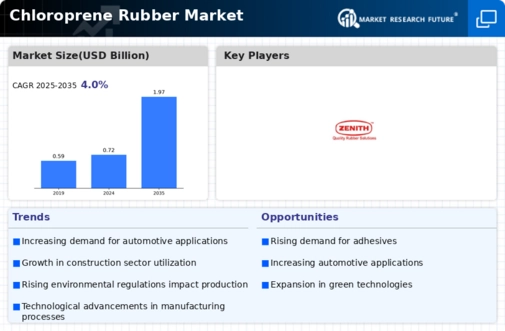Market Share
Chloroprene Rubber Market Share Analysis
In the Chloroprene Rubber (CR) market, effective market share positioning strategies are essential for companies to establish a competitive edge and maximize their presence. Several key strategies shape the market share positioning dynamics:
Product Differentiation: Companies differentiate their CR products based on quality, performance attributes, and applications. By offering unique features such as improved chemical resistance, heat resistance, or adhesion properties, companies can carve out a distinct market niche and capture a larger share of specific market segments.
Focus on High-Value Applications: Emphasizing high-value applications such as automotive hoses, seals, and gaskets, where CR's properties are most advantageous, allows companies to target premium market segments. By strategically aligning product development efforts and marketing initiatives with these applications, companies can capture a larger share of lucrative market segments.
Regional Market Penetration: Companies strategically focus on specific geographic regions where demand for CR is high or growing rapidly. By tailoring marketing strategies, distribution networks, and product offerings to meet the unique needs of each region, companies can strengthen their market presence and gain market share in targeted geographic areas.
Strategic Partnerships and Collaborations: Forming strategic partnerships with key players in the supply chain, such as raw material suppliers, distributors, and end-users, can enhance market share positioning. Collaborations enable companies to leverage complementary strengths, expand market reach, and access new customer segments, thereby increasing their market share.
Investments in Research and Development: Companies invest in research and development to innovate and develop new CR formulations with enhanced properties and functionalities. By staying ahead of technological advancements and addressing evolving customer needs, companies can differentiate their products, attract new customers, and gain market share from competitors.
Customer Relationship Management: Building strong relationships with customers through excellent service, technical support, and customization capabilities is crucial for market share positioning. By understanding customer requirements and providing tailored solutions, companies can enhance customer loyalty, increase repeat business, and capture a larger share of the market.
Price Optimization Strategies: Implementing effective pricing strategies, such as value-based pricing or competitive pricing, helps companies optimize their price positioning in the market. By offering competitive prices while maintaining profitability, companies can attract price-sensitive customers, gain market share, and mitigate price-based competition.
Brand Building and Marketing: Investing in brand building initiatives and marketing campaigns helps companies create awareness, credibility, and preference for their CR products. By highlighting unique selling propositions, promoting brand reputation, and communicating value propositions effectively, companies can influence customer perceptions and gain market share.
Vertical Integration: Vertical integration along the value chain, from raw material production to end-product manufacturing, allows companies to control costs, quality, and supply chain efficiency. By integrating backward or forward into key value chain activities, companies can strengthen their market position, enhance competitiveness, and capture a larger share of the market.
Continuous Improvement and Adaptation: Continuously monitoring market trends, customer preferences, and competitive dynamics enables companies to adapt their strategies and offerings accordingly. By embracing agility, flexibility, and a culture of continuous improvement, companies can respond swiftly to market changes, capitalize on emerging opportunities, and maintain or expand their market share.




Leave a Comment